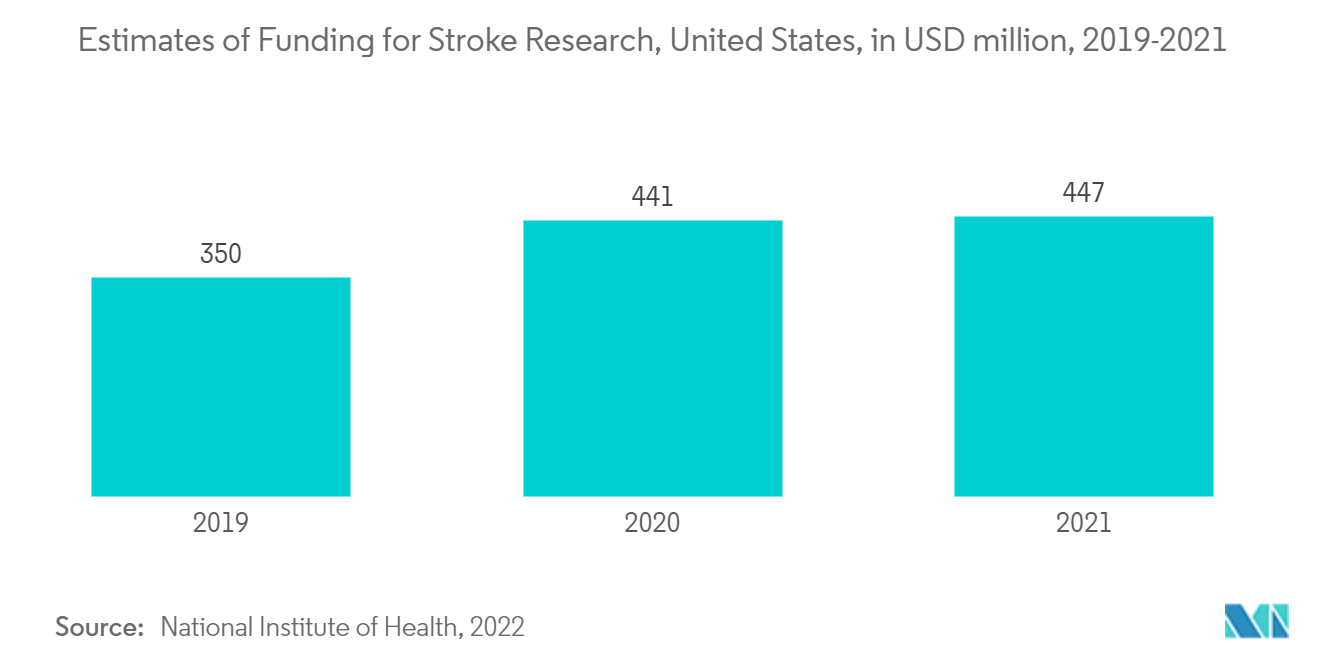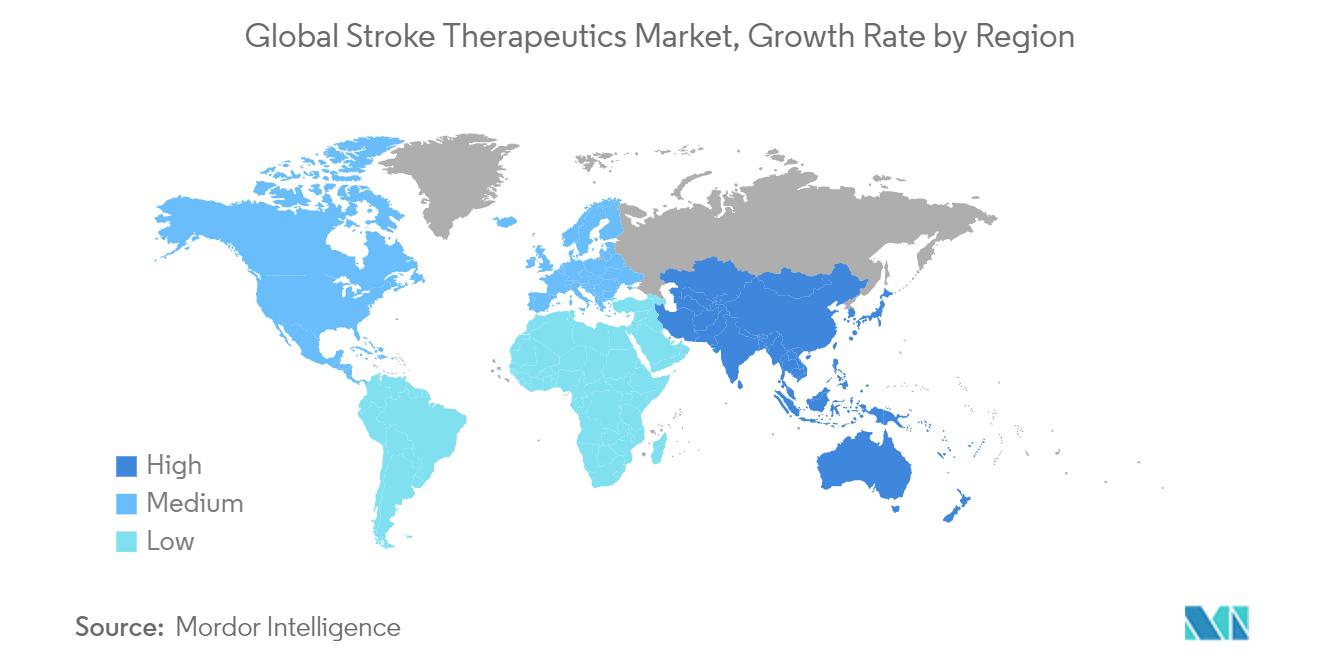Market Trends of Global Stroke Therapeutics Industry
This section covers the major market trends shaping the Stroke Therapeutics Market according to our research experts:
Tissue Plasminogen Activators (TPA) Dominated in the Market and is Expected to Hold Dominance during the Forecast Period
Tissue plasminogen activator is an effective blood thinner and is approved for the treatment of stroke. It improves the chances of recovering. Several studies observed that patients who receive tissue plasminogen activator during their ischemic stroke are more likely to recover completely or have fewer chances of disability than those who do not consume the drug. Hence, for all patients with ischemic stroke, a tissue plasminogen activator is a first-line therapy to treat.
Activase and Tenecteplase are tissue plasminogen activators manufactured by using recombinant technology and hence named an r-tPA. Availability of products, investment by industry players for commercialization of products, and improving healthcare access in developing countries are some of the key factors driving the market growth. Additionally, several countries' stroke awareness programs support efforts to enhance the utilization of tissue plasminogen activators in eligible stroke patients and thereby improve the outcome of treatment. For instance, the National Institute of Neurological Disorders and Stroke (NINDS) launched a public awareness campaign in the U.S. in 2001 to assist people in recognizing the early signs and symptoms of a stroke. The institute also spreads awareness about the benefits of early treatment through tissue plasminogen activators. Such awareness and educational programs help to improve the utilization of tissue plasminogen activators among patients as soon as their symptoms start.
In January 2022, Thrombolytic Science, LLC was granted a second patent by the United States Patent and Trademark Office for the innovative treatment of ischemic stroke through the use of fibrinolytic enzymes, tissue plasminogen activator, tPA, and urokinase plasminogen activator, uPA. The recent patent approval will pave the way for the development of tissue plasminogen activator-based treatment of stroke, which will likely add to the market growth.
However, patent expiry and entry of Clot-retrieval devices are some of the factors that may restrain the tissue plasminogen activator market growth during the forecast period. For instance, several studies showed that clot retrieval devices are effective in treating clots in large arteries. However, a small artery tissue plasminogen activator is still a preferred treatment.

North America Held a Maximum Share in the Market and Expected to Dominate the Market during the Forecast Period
The United States contributed maximum in the North America region in 2021 and is responsible for the dominance of the region across the world. Advanced healthcare infrastructure, well-equipped hospitals, and availability of point of care services are responsible for the maximum demand of drugs for stroke from the United States. Stroke is a condition where treatment must be given as early as possible after the onset of symptoms and hence the availability of quick treatment is a key factor responsible for the high survival rate in the United States. According to the statistics published by the Centers for Disease Control and Prevention (CDC) in April 2022, more than 795,000 Americans have strokes. From which 610,000 are found to be new cases each year. Statistics also showed that Stroke is one of the leading causes of death in the United States and every 40 seconds, someone from the United States has a stroke. This huge patient base and ease in accessing advanced treatment are responsible for the major share of the region across the globe.
North America is expected to observe the same dominance during the forecast period due to development of innovative therapies, local presence of major industry players, and entry of new therapies. In November 2020, the United States Food and Drug Administration approved AstraZeneca's Brilinta to reduce further risk of stroke in an acute ischaemic stroke. The drug works by inhibiting platelet activation mechanism.


